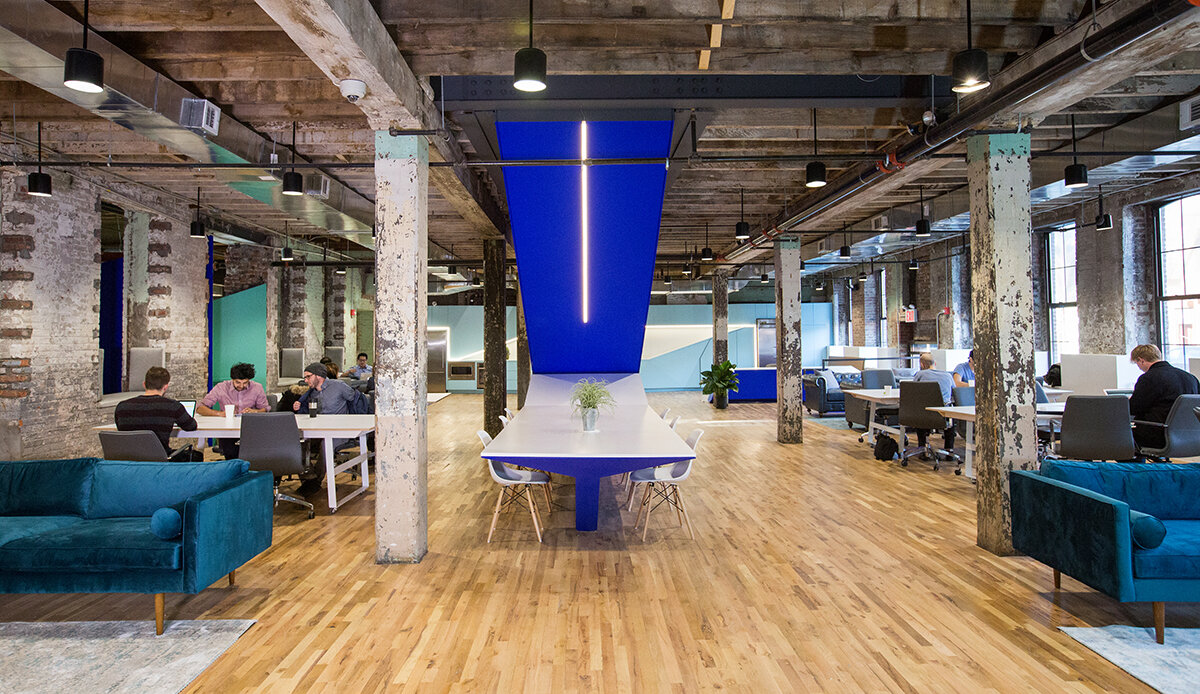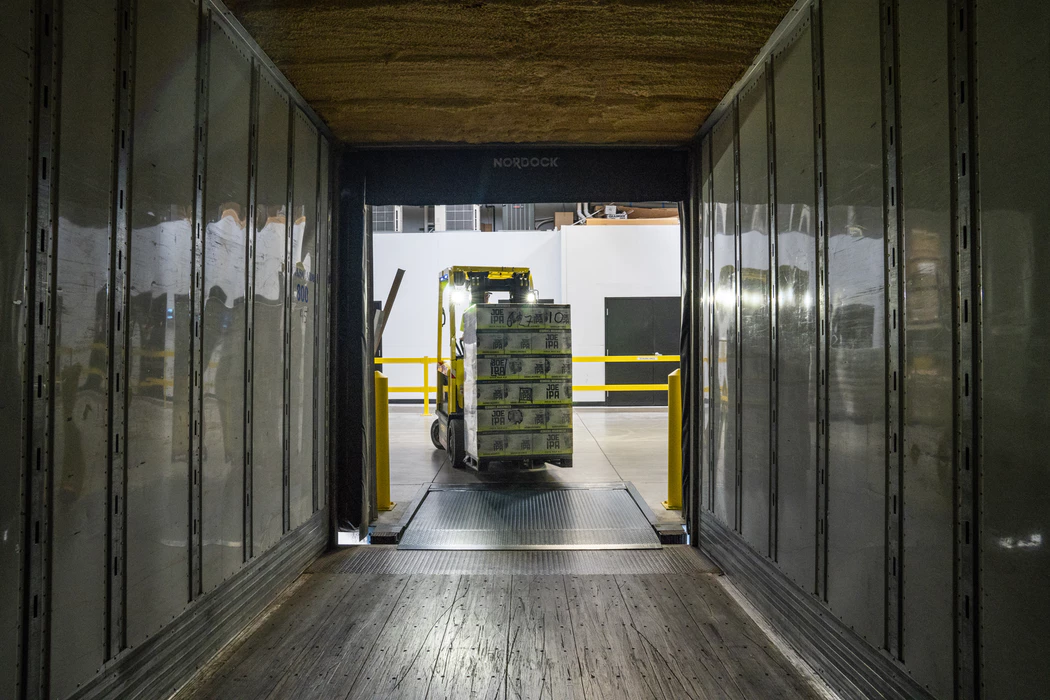By Bond Collective Staff
If you’re a startup entrepreneur transitioning to a coworking space, your office move may be as simple as packing your laptop and a few personal items into a backpack. But for a large business planning a transition to a coworking space, the process can quickly devolve into chaos.
Fortunately, you can defuse most difficulties with a bit of planning and forethought.
Addressing the details early and making arrangements beforehand will streamline the process enough that moving your 50+ team from its current location to a more suitable coworking space will feel like just another day at the office.
In this article, we’ve created a step-by-step guide for the smoothest office move possible.
How To Successfully Plan And Execute An Office Move
1) Start Early
If your office move involves more than one or two people and their equipment, there will be a long list of logistics to organize and coordinate. It’s best to start planning early so you have plenty of time to make sure your office move procedures are firmly in place before the big day arrives.
You can even begin preparing before you’ve secured a new space. For example, you can create a destination map and make changes to the new office (see steps below) at the very end of the process after you’ve done almost everything else.
2) Designate One Place For All Information
Your office move — regardless of size and complexity — is going to generate a great deal of paperwork. You’ll have notes, contracts, to-do lists, inventories, schedules, insurance records, maps, diagrams, and spreadsheets (just to name a few), and it all needs to be easily accessible at a moment’s notice.
We suggest digitizing this information (e.g., scanning or taking a picture of physical documents) and storing it all in the cloud. That way, you can view the details of your move anytime, anywhere.
3) Set A Budget For The Move
Moving an office — with all its personnel, furniture, equipment, and supplies — is a complicated process. Because there are so many variables involved, you need to work hard to keep the spending under control.
The best way to do this is to meet with owners and upper management to carve out a budget for all move-related expenditures. How much is reasonable to spend on a moving company and what exactly would you like to have done?
Some moving companies, for instance, only transport items from point A to point B (and will charge less), while others take care of all the planning, logistics, and preparation for you (and will charge more).
Within the moving budget, it’s also essential to include any furniture, equipment, and supplies that you plan on purchasing to outfit your new space.
Before finalizing the budget, be sure to set up a payment and approval process for all move-related expenses. Will you use a specific company credit card? Will you submit invoices? If the latter, who has to review the invoices before you can proceed with the purchase?
Establishing these details early on in the planning stage will make everything easier once the actual move gets going.
4) Announce The Move
Once you’re committed to the office move, plan a detailed announcement for your employees.
Whether you choose to announce the move via hard-copy letter, email blast, or video, be sure the information is comprehensive and tells your team everything they need to know.
Here are a few examples of information to include in your announcement:
-
Reason for the move
-
Location of the new office (e.g., building name, address, floor, etc.)
-
Features of the new office
-
Moving dates (if you have these planned already)
-
Employee responsibilities prior to the move (e.g., steps they can take to help the process go smoothly).
-
Future information the employees will receive
An advantage of announcing the move early on is that it will help you get the steps firm in your mind. Preparing for the announcement will reveal any gaps in your master plan that you can then shore up so everything proceeds smoothly.
5) Meet With Your Team
After you announce the move, gather your team to talk about the upcoming event face-to-face. Reiterate the details of the announcement, and then ask for input from your employees about their needs for — and concerns about — the new workspace.
Items might include:
-
Design recommendations (e.g., designate a quiet space)
-
Seating changes
-
Workspace needs (e.g., privacy screens, adjustable desks)
-
Equipment needs (e.g., upgrade printer/copier)
It is also beneficial to send out a survey after the face-to-face meeting to gather any personal preferences — seating changes or a team switch, for example — that your team members may not have felt comfortable expressing in a group setting.
6) Produce A Timeline For Your Office Move
Before you make any plans, produce a timeline for your office move. You don’t need every single detail at this stage, just the broad strokes.
To ensure that the timeline is as realistic as possible, discuss it with your team members. And give yourself plenty of time to complete the project. A small move can take up to three months to prepare, while a large one can take eight months to a year to organize.
7) List What You Have And What You Need
Making a list of what you have and what you need — be it furniture, equipment, appliances, or supplies — will help prevent overspending when it comes time to outfit the new office space.
Don’t overlook tools and supplies you use every day, like trash cans, coffee mugs, silverware, napkins, rags, cleaning chemicals, and other essentials.
And if you won’t be moving presentation equipment like wall-mounted whiteboards, projectors, or video screens, be sure to include those on your “Need” list so you’ll have them in place from day one.
8) Create Strategies To Maintain Workflow During The Move
Moving your office takes a great deal of time and effort, not only on your part but on the part of your employees as well. Sometimes an office move can take a year or more to accomplish. You can’t afford for the business to stop during that time.
Prevent team members from losing focus by creating strategies to maintain workflow during the move.
These strategies may involve more hands-on managerial involvement to keep team members engaged on project deadlines that occur during the move or negotiating the beginning of new projects until after the move is complete.
Whatever strategies you come up with, be sure to communicate this information to managers and team members alike so everyone knows what to expect once the move gets underway.
9) Create An Origin Map
During the planning stage, create a diagram of your current office space (i.e., an origin map).
On this map, group team members (or even entire departments) and their furniture and supplies by name, color code, or some other indicator. For example, you might designate your art department as blue, your IT department as red, and your customer service department as yellow.
This becomes useful later on when labeling boxes and transferring said boxes from the moving truck to the proper area in your new office space.
10) Create A Destination Map
If you’ve already secured your new office space, create a diagram (e.g., a destination map) of that working environment.
You can then arrange your existing team members in the new space and identify any potential problems that space may create. It’s best to uncover those issues before starting your office move so the actual transfer of personnel and property proceeds as smoothly as possible.
11) Design A New Office Layout
Once you have a destination map, and perhaps a general floor plan, begin designing the new office layout.
Be sure to take into account the input you received from your team members way back at the beginning of the planning process so you can arrange things for optimal workflow.
Putting the new layout on paper can also help you identify potential problems with the new space (e.g., a larger work area that needs more desks or a few temporary walls) that you can then address before you move in.
12) Make Changes To The New Space Before The Move
Make any changes to your new office space before you move in. It’s much easier (and cheaper) for construction, electrical, and IT crews to work in an empty space.
If you install new power outlets, knock out walls, and run networking cable before moving, your team will have an easier time getting settled and back to work.
13) Secure A Moving Company
Hiring a moving company is one of the most critical tasks for a successful office move.
If possible, secure a company that specializes in this type of transport. They will have all the experience, tools, and supplies (not to mention recommendations and helpful procedures) to make your move as painless as possible.
14) Arrange For Supplies
Regardless of the size of your business, you’re going to need boxes, tape, labels, and other supplies. Assemble these supplies early so they’re ready to go when you are. You can even start boxing up non-essential items before the big day to cut down on packing time.
15) Take This Opportunity To Downsize
In the months and days leading up to your office move, review your inventory and identify items you no longer need. Shred old records. Organize an office warehouse sale for filing cabinets, desks, chairs, etc.
This will help reduce the amount of furniture and boxes you’re left with to coordinate and move.
16) Create Labels For Boxes And Spaces In The New Office
Now is the time to put the naming designation you created in steps four and five to work. For example, mark each box with the employee’s name and color code that corresponds to where they’ll work in the new office.
When you have access to that space, label each area with the appropriate color code so that the movers know where to put each box.
17) Coordinate Origin And Destination With An Item Spreadsheet
Keeping track of all the boxes and furniture involved in an office move can be a logistical nightmare. We suggest creating a spreadsheet beforehand so you know what you’ve got and where it goes.
Your spreadsheet should include information such as:
-
Date item moved
-
Type of object (e.g., box, table, chair, etc.)
-
Color
-
Name of employee to whom the object belongs
-
Origin building and floor
-
Destination building and floor
-
Team name
-
Manager
-
Notes
During and after the move, you can refer to this list to ensure that nothing gets lost in transit.
18) Meet With Your Team Again
Your team members will have questions. Meet with them again before the big day to provide essential information that may not have been available before, including:
-
Parking
-
Access credentials
-
Features of the new space
-
Routine changes
-
Layout of new office
That way, your team members will feel comfortable making the move from one office to another.
19) Clean Both Spaces
Before your office move, arrange for a professional cleaning company to thoroughly scrub the new space. If you’ve made any modifications to the office, there will be dust and debris. It is much easier to clean up any messes before you start moving large furniture and boxes in than after.
It’s also important to clean your old office space after everything is out. Many leasing companies will charge you extra for this service, and the price is usually quite a bit more than you would spend if you hired a third party.
20) Unpack
Before you start tearing open boxes in a rush to unpack, consider conducting this part of the office move as the opposite of the organized method you used to pack it all up.
You already have the records and processes in place from the packing stage, so simply run them in reverse for an organized, stress-free (or at least less-stressful) conclusion to your office move.
21) Celebrate
Once you’re all unpacked and settled in, take some time to celebrate your smooth and successful transition. Then get back to work.
Make Your Office Move Easy With Bond Collective
With Bond Collective, your office move is easier than ever.
If your team is already working in one of our beautiful coworking spaces and needs to expand to dedicated desks or even a private office, it’s only a matter of packing your laptop and personal items and walking the few steps to your new work environment.
If you’re moving from an outside location to one of Bond Collective’s six convenient locations, the process is much the same. All your team needs are their laptops and personal items. We provide the furniture and amenities.
Your office move can be as easy as plugging in your computers and getting to work.
No lengthy planning. No complicated packing. Just a seamless and simple move.
It doesn’t matter whether you’re relocating one person or 100 people within a Bond Collective space or across the country, we’ll make the transition as painless as possible.
Our specially curated workspaces combine the best of modern decor with the professional appearance and ambiance that every business needs. You’ll also enjoy industry-leading amenities, including:
-
24-hour access
-
Custom build-outs
-
Conference rooms
-
Curated events
-
Insanely fast WiFi
-
Black-and-white printing
-
Networking events
-
Mail service
-
Complimentary beer, coffee, tea, and fresh fruit
-
Daily on-site cleaning
-
Mothers’ rooms
-
Rooftop lounge
-
Bike storage
-
Photo and sound studio (Gowanus)
-
Complimentary spa water
-
Guest reception and greeting
-
Private meeting and phone booths
-
Office showers
When you partner with Bond Collective, you can avoid the headache and stress of an office move and focus instead on keeping your team engaged and performing at 100 percent.
For more resources to help you manage your business or to learn more about the advantages of coworking spaces for digital nomads, remote workers, and businesses of all kinds, visit BondCollective.com today.










